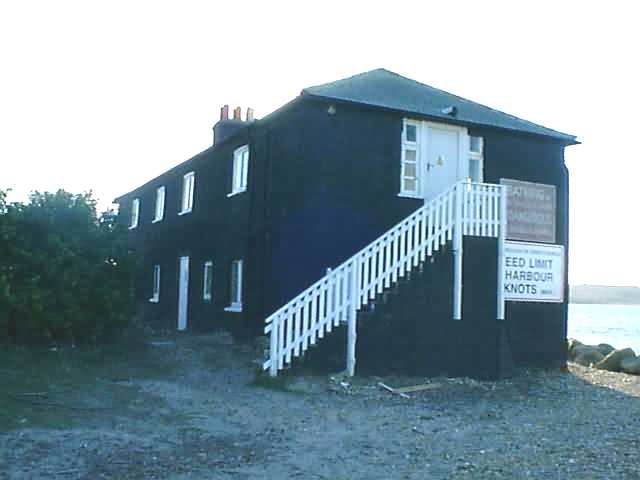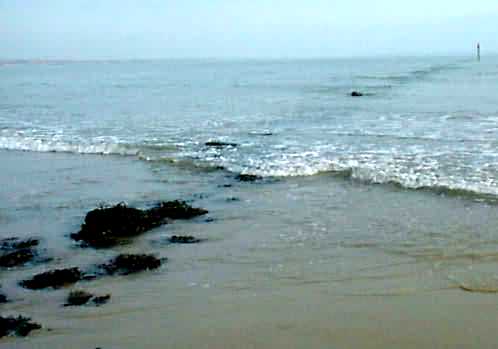Hengistbury Head in the 17th Century
Christchurch has always been a shallow drying harbour with difficult access. During the mid 1600's Andrew Yarranton outlined a scheme to improve Christchurch Harbour. Yarranton planned to utilise the ready supply of Iron Ore from the doggers at Hengistbury head to build a naval gunnery foundry and, utilising existing boat and ship building facilities, to build a naval dockyard. A fort was planned to aid local defence and he also planned to make the River Avon more navigable so goods could be transported further inland with ease. Under the sponsorship of the Lord of the Manor of Christchurch, (who happened to be Lord Clarendon, the Chancellor of Charles II) Yarranton produced a document detailing his proposals. However, most of Yarrantons proposals came to nothing.

The Black House at Gervis Point on Mudeford Sandspit
The one major item of Yarrantons scheme that came to being was to cut a deep water channel from the harbour out to the sea, avoiding the treacherous narrow entrance to Christchurch Harbour ( locally known as The Run). The channel was cut through Mudeford Sandspit approximately half way along (about 500 metres from Hengistbury Head) and was in use by 1698. Yarranton utilised the boulders from the head to build a jetty out from the cut. While the cut provided direct access to deeper water avoiding the fast flowing Run and the treacherous sand banks at its entrance, the cut suffered severely from long shore drift where sand collected against the jetty and narrowed down the cut.
Evidently Yarrantons cut was in use for up to 30 years but was blocked on several occasions, the most severe problems occurring after the great storm of 1703. It was finally abandoned after it was blocked by yet another heavy storm. Yarranton made the rather obvious and severe mistake of building his pier on the northern side of the cut, this caused the pier to capture the long shore drift sand and block the channel, which was only kept clear by the strength of the river flow and dredging. If he had build his pier to the South of the cut things may have been different. Only the line of Ironstone doggers now remain which mark Yarrantons brave attempt.

The remains of Yarrantons Cut - the Long Rocks
Locally the line of the old jetty is known as Clarendons Jetty or the Long Rocks. Whether Yarrantons cut actually caused the closure of the original exit is doubtful, especially as The Run follows a naturaldepression caused by a geological fault. In any event things rapidly returned to the original natural state with the two rivers flowing out through the Run and Yarrantons cut filled in by the wind and sea. Today there is no indication of the cut save the Long Rocks. Clarendons Jetty must have used many hundreds if not thousands of tons of the Iron Stone doggers from Hengistbury Head. One would expect that they were collected in the easiest manner available and were probably stripped off one small area of the foreshore, exposing the friable base of one of the heads to the action of the sea at that point. Smeaton, in a report 90 years later, indicates that severe erosion was being experienced by the head. Currently the man-made damage to the head is solely attributed to John Holloway and the Hengistbury Mining Company (see later) but possibly the first blow was delivered over 150 years previously by the building of Clarendon Jetty.
Through probably not directly related to Yarrantons scheme but dating from the same period, is the Black House at the north end of Mudeford Sandspit at Gervis Point. The Black house was a centre for shipbuilding with several ships over 100 tons being builtalongside its western wall
Ship up to 100 tons used to be built while propped up on their side, against the right hand wall of the Black House. The Black House lay derelict for many years but has now found a new use as holiday flats. The Black house mirrored its contemporary across the Run, the Haven House tavern.
However the current Haven House tavern is actually an imposter. It dates back a mere 150 years or so. The original Haven House Inn on Mudeford Quay was the building now known as the Dutch House.